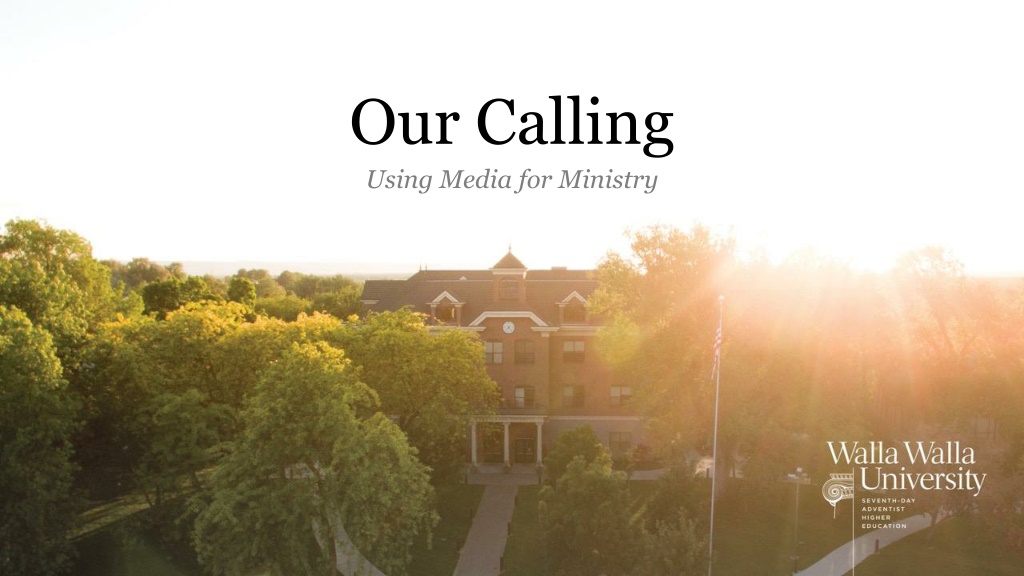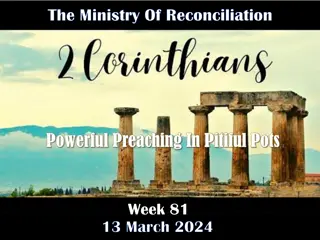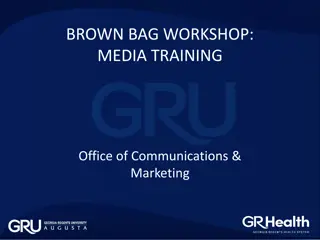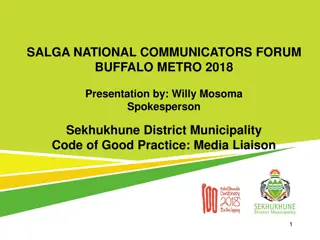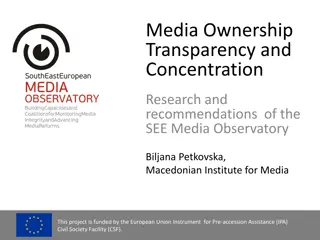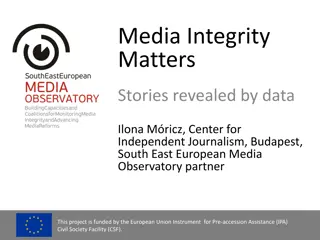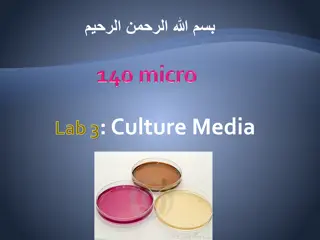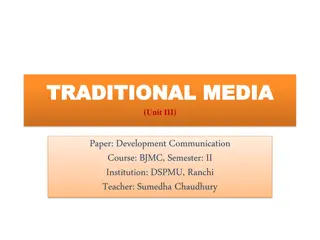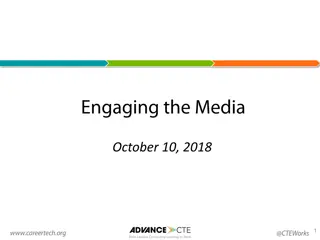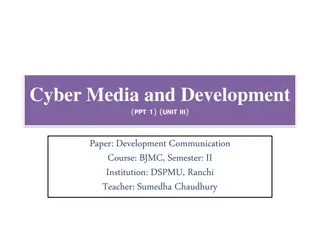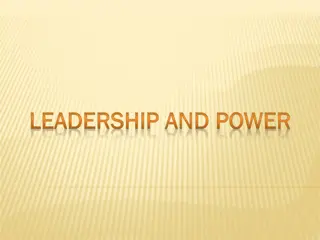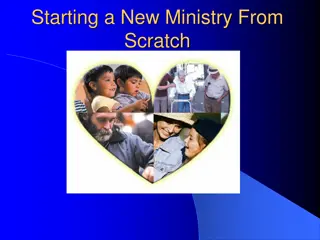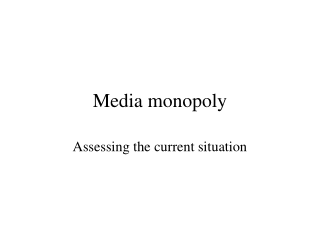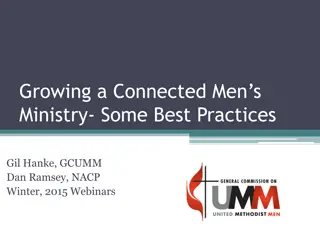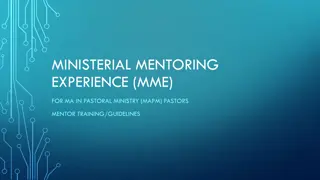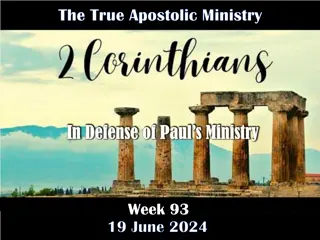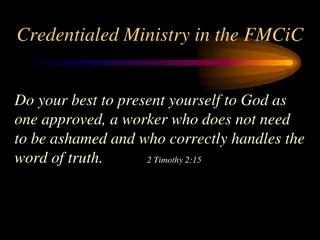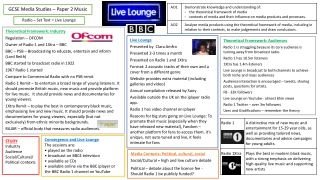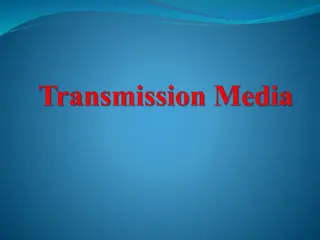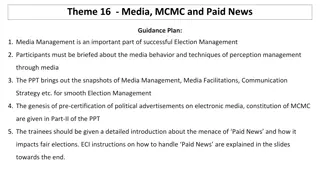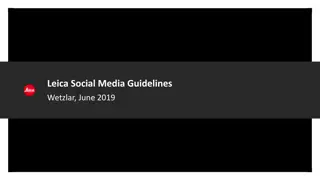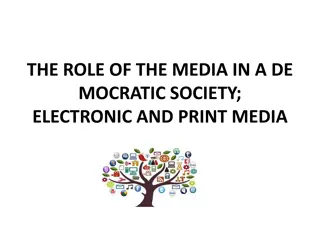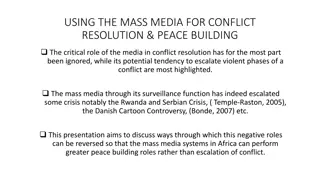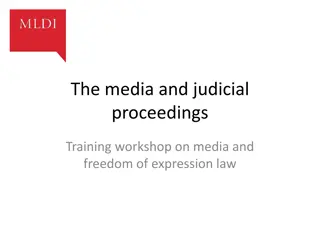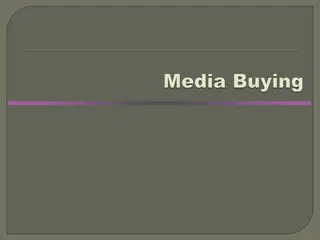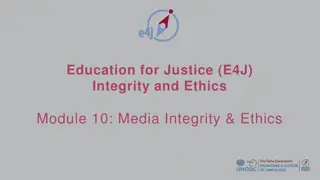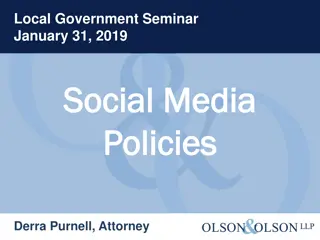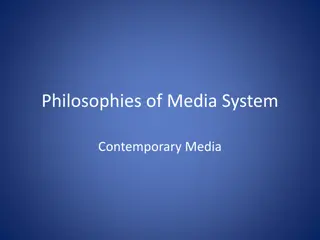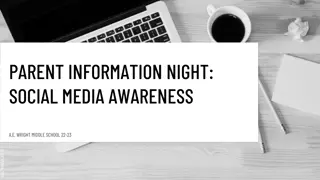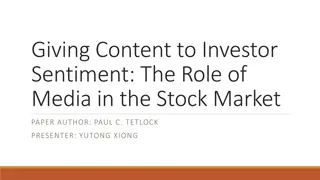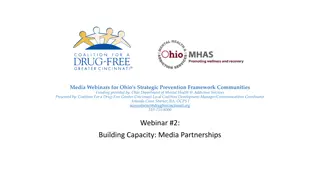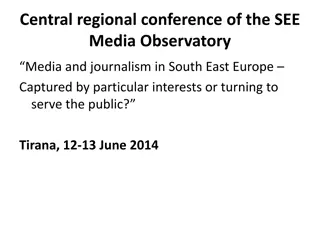Embracing the Power of Media for Ministry
Utilizing media for ministry is a powerful way to fulfill the calling of spreading the gospel to all corners of the world. Through images and quotes from biblical scriptures, the content emphasizes the importance of using media as a tool for communication and spreading the message of faith. The examples provided showcase the profound impact media can have on influencing beliefs and behavior, making it a key component in modern-day outreach efforts.
Download Presentation

Please find below an Image/Link to download the presentation.
The content on the website is provided AS IS for your information and personal use only. It may not be sold, licensed, or shared on other websites without obtaining consent from the author. Download presentation by click this link. If you encounter any issues during the download, it is possible that the publisher has removed the file from their server.
E N D
Presentation Transcript
Our Calling Using Media for Ministry
The Calling Our Mission The Power of Media Indirect Communication
And He said to them, Go into all the world and preach the gospel to every creature. Mark 16:15
Therefore go and make disciples of all nations, baptizing them in the name of the Father and of the Son and of the Holy Spirit, and teaching them to obey everything I have commanded you. And surely I am with you always, to the very end of the age. Matthew 28:19-20
This is to my Fathers glory, that you bear much fruit, showing yourselves to be my disciples. John 15:8
Why use Media to fulfill the commission? Media is powerful It is where the people are
Media Effects 1934 Frank Capra film, It Happened One Night
Media Effects 1934 Frank Capra film, It Happened One Night Undershirt sales dropped by 75% Nation-wide Gottschalk, Mary. "AMC's Look at Hollywood Fashion Follows Fads from Screen to Closet. Pittsburgh Post-Gazette. 17 August 1995 (p. C1).
Media Effects By March 1986 there were 43 documented Russian roulette deaths directly attributed to imitations of the Russian roulette scene in the 1978 film, The Deer Hunter Coleman, L. (2004). The copycat effect: How the media and popular culture trigger the mayhem in tomorrow s headlines. New York: Paraview.
Media Effects 2020 Super Bowl adds cost approx. $5 million for a 30 sec. spot
Five Types of Media Effects Cognitive-Type Effect: Media can effect what we know by planting ideas and information into our minds. The most prevalent media effect. Attitudinal-Type Effect: The media can create and shape our opinions, beliefs and values. Emotional-Type Effect: The media can make us feel things. They can trigger strong emotions such as fear, rage, and lust. Physiological-Type Effect: Media can influence our automatic bodily systems. These are usually beyond our conscious control. Behavioral-Type Effect: Media can trigger actions. Potter, W.J. (2011) Media Literacy 5th Ed. Los Angeles: Sage
Banduras Social Learning Theory Individuals learn not only in classrooms but also by observing role models in everyday life, including characters in movies and television. Bandura, A. (1977). Social learning theory. Englewood Cliffs, NJ: Prentice-Hall Bandura, A. (1986). Social foundations of thought and action: A social cognitive theory. Englewood cliffs, NJ: Prentice-Hall
Where people are Children ages 8-12 in the United States spend 4-6 hours a day watching or using screens, and teens spend up to 9 hours. American Academy of Child and Adolescent Psychiatry, Feb. 2020 American adults spend more than 11 hours per day watching, reading, listening to or simply interacting with media. Nielson, 2018 People in the Philippines spend an average of 10 hours online every day, according to the Digital 2019 report. Emily Dixson, CNN, Feb. 2019
Indirect Communication What is it? Why is it effective?
What is indirect communication? It is naturally the error of the modern period that all communication is direct, that it has forgotten that there is such a thing as indirect communication. Soren Kierkegaard Narrative, story, nuance, hidden meanings.
Overhearing the Gospel You and I are not sharing the gospel as pioneer missionaries chopping our way through the jungle to bring the fresh, new, first-time word to startled villagers. Perhaps most of us have in times of disappointment wished it were so, idealizing such occasions as opportunities to write the message on new tablets. Of course, there are no new targets. . .those who hear me have been sitting before the pulpit for two thousand years. Even for the casual listeners there is a fairly high degree of predictability in the sermon, and surrounding the whole occasion is the dead air of familiarity. We have been here before, and here we go again. Fred B. Craddock, Overhearing the Gospel 2002, p. 16 & 17.
C.S. Lewis For me, reason is the natural organ of truth; but imagination is the organ of meaning. Imagination, producing new metaphors or revivifying old, is not the cause of truth, but its condition. C.S. Lewis, Mere Christianity
Jesus method Jesus sought an avenue to every heart. By using a variety of illustrations, He not only presented truth in its different phases, but appealed to the different hearers. Their interest was aroused by figures drawn from the surroundings of their daily life. None who listened to the Savior could feel that they were neglected or forgotten. The humblest, the most sinful, heard in His teaching a voice that spoke to them in sympathy and tenderness. Ellen White, Christ s Object Lessons
Media and Indirect Communication The arts are a natural medium for imaginative indirect forms of communication. Benson P. Fraser, 2020 Hide and Seek: The Sacred Art of Indirect Communication
